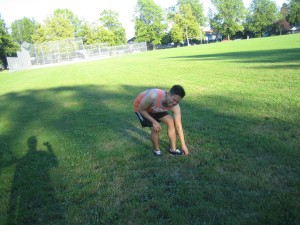Foot pain has affected millions of individuals all over the world. Issues with the foot ligaments which connect bone to bone often initiate sore foot conditions from acute injuries to chronic problems that cause persistent foot pain. Some foot problems are considered hereditary.
Sprains
Sprains can be complete or partial ligament tears that can be caused by sports or simply due to being out of balance and turning the ankle. The symptoms of a sprain include the following:
- Pain
- Swelling
- Bruising
- Inability to walk
Sprains are categorized as first degree, second degree and third degree. The most severe cases are considered as third degree sprains. The RICE method (rest, ice, compression, elevation) can be used on mild sprains within a week while moderate to severe cases can take up to a few months to fully heal. The second and third degree sprains might require a cast or splint to immobilize the ligament while it heals.

Flat feet
Flat feet occur once the ligaments supporting the arch of the foot are loose or lax than normal. Previous injuries, obesity, diabetes and foot stressors such as wearing high heels can contribute to flat feet.
It is important to note that flat feet are common among infants and small children but can also affect adults. The tenderness and pain in the arch can occur. In some cases, corns or hardened skin can develop on areas on the base of the foot.
Plantar fasciitis
The plantar fascia is the ligament that stretches all over the base of the foot and connects the heel to the toes. This can become swollen, inflamed and painful. Any injury to the plantar fascia typically occurs most often among individuals who have flat feet or high arches, overweight, tight Achilles tendons or calf muscles as well as those who stand for extended periods of time on hard surfaces.
All of these can strain on the ligament which develops miniature tears that cause swelling and pain. The pain due to plantar fasciitis occurs most often as the individual steps out of bed in the morning and stretches the damaged ligament. The pain is reduced throughout the day as the ligament is stretched out but returns after extended episodes of sitting.
Using supportive shoes, adequate rest and maintaining the foot in an extended position during the night can prevent it from tightening up along with splints to reduce the pain from plantar fasciitis. In some cases, non-steroidal anti-inflammatory medications such as ibuprofen can reduce the symptoms. There are steroid injections that help reduce the swelling and inflammation. In rare cases, surgery might be required.
